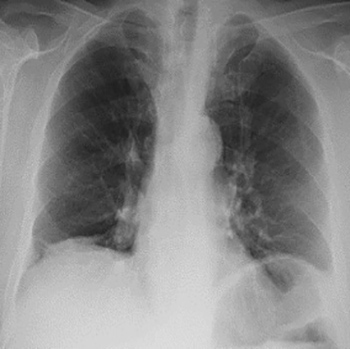Keywords
Diaphragmatic paralysis, dyspnoea, hypoventilation, noninvasive ventilation, phrenic neuropathy
Abstract
Bilateral diaphragm paralysis due to bilateral isolated phrenic neuropathy (BIPN) is a very rare cause of unexplained respiratory failure.
We present a 65-year-old patient with no relevant previous medical history who presented in the Pulmonology Clinic with mMRC1 dyspnoea and orthopnoea. After the medical work-up, diaphragmatic paresis was diagnosed. Inspiratory muscle training resulted in mild symptomatic improvement and treatment with noninvasive mechanical ventilation (NIV) was initiated.
This condition is generally chronic and has a poorer prognosis, compared to other cases of phrenic nerve involvement. In this case, NIV restored near-normal daily function.
References











